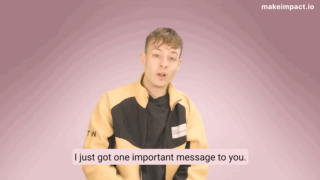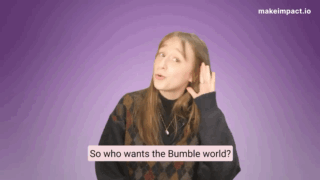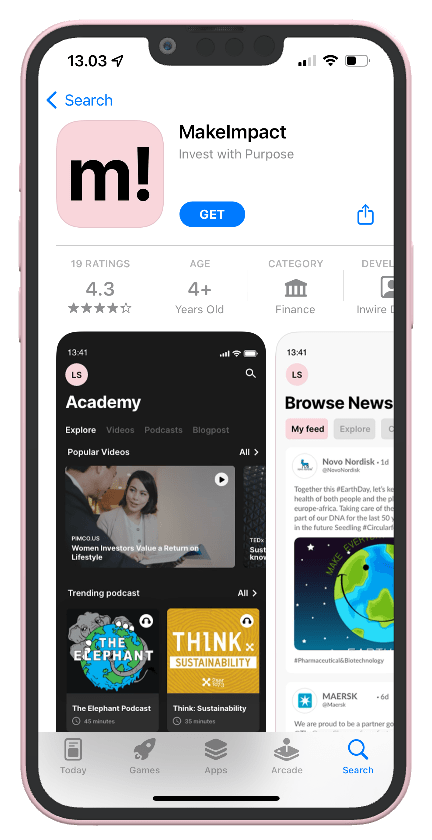What do you think of when you hear the term ‘circular economy’?
When you hear the expression “circular economy”, do you immediately think of recycling bottles? 🔃🧃 Or buying second-hand clothes? 👗👕 Well, then you are not totally wrong, but let us tell you how many more circular economy options are out there. ♻️ No child left behind!
What is the circular economy?
The circular economy is a model that aims to limit the consumption and waste of resources and products as well as the production of waste. It is about creating, prolonging, or slowing down a recurring loop: Waste is now a raw material to be reused. 🚱 So, you try to make the most out of your already existing products! 😍
It is the opposite of the linear economy, also known as “extract, produce, consume, throw away”, which is also the model used in most societies. 🏙
What kind of ways are there to push forward the circular economy? 🤔
The idea of circularity can kick in throughout the different stages of a product’s lifecycle. 🔵 Let’s see how:
Design & Manufacture
At the product design stage, it is all about facilitating the repairing, the disassembling, and the recycling. The goal is to extend the object’s life and facilitate the recovery of materials. 🪡🧶
The choice of raw materials is also essential. Some raw materials require a lot of resources to be extracted. 😨 In addition, some production inputs such as rare minerals are extracted in conflict zones or countries that do not respect human rights (dangerous working conditions, child labor, poverty wages, etc.). 🥴 Therefore, the reuse of extracted materials comes as a strategy to reduce both environmental damage and the risk of modern slavery. 🌳🛠
Distribution & Retailer
Which means of transportation to use? 🚚🛳 Home delivery or store delivery? Which container? Which packaging? 📦 There is no universal answer while each company should think of the most sustainable solutions among the viable options.
For example: Imagine a company that sells cosmetic oils and wonders which shipping container is the most ecological. You might think they should use glass bottles since glass can be reused and recycled for an infinite amount of time. 🥛😎 But look, when using glass containers the shipment will be heavier and require more fuel than if plastic containers are used. 😮💨 On the other hand, when choosing plastic containers, concerns may arise about their lifespan and chance to recycle the material at the end of their lives. Depending on the parameters, the environmental impact of plastic can be better than glass and vice versa.🥴 Through life-cycle assessment analysis and tools, the company can calculate the environmental impact of each solution and adopt the most eco-friendly. 🤙
Consumption 🍴
On the buyer’s side, we consumers shall consume responsibly. You certainly don’t need to change your phone every time a new model comes out! 📵
Maximize Use – Repair & Reuse
Extending the lifetime of a product entails repairing it as much as possible or selling it if it is not used. 🪛🔨
We can also think about an economic model based on use over possession: the sharing economy. 🫂
Here an example could be that if you don’t need to use a car every day, instead of buying one, you can just rent one or carpool. 🚗 This maximizes the use of existing products and spares resources from producing one for every single user. This concept can apply to other less conventional categories too like a lawn mower or a raclette machine jointly bought with your neighbors! 🥸
Recycling & Reprocessor
The aim here is to look for alternatives to landfills or incineration. ♻️ Circular economy companies process their waste according to the following scheme: If the first solution is not possible, they consider the next and so on. Here are some questions to ask yourself when trying to extend a product’s life ✅:
1) Reuse: Is it possible to reuse the object as is?
2) Upcycling: Is it possible to transform the object into a new product, adding a strong added value?
3) Composting & Recycling: If there are organic materials they will be composted. And if they are not, is it also possible to recycle them?
4) Energy recovery: As the last resort, they will turn to incineration, which generates heat by burning the non-reusable materials. So, is it possible to use the product for energy?
Are there problems with the circular economy? 🤔
However, not everything that shines is gold. 🏆 Lucie Domingo warns us against the too-easy solutions that the circular economy can present. 😳
Indeed, the surplus of waste and the depletion of resources are two major problems of our century, but they are not the only ones! The risk with the circular economy is that we forget about the other less visible challenges of our century such as global warming and the loss of biodiversity, which cannot be solved with this type of economic model. 🥵 Moreover, she found, we only partially question the use of the eco-designed objects. 😯 We often forget their maintenance, their transport, or their usefulness for the society and the individuals who compose it. ☹️
Let’s take the example of water bottles: Does consuming recycled plastic water bottles on a daily basis really address the issues surrounding plastic? Shouldn’t we question the utility of plastic bottles in general? Can’t we drink tap water directly and get a water bottle for our trips? 🤯
Essentially, Domingo says that the urgency of the environmental crisis needs a fundamental change in our industrial activities and our daily lives. 🏭🚫 The risk is to act too quickly! The focus on immediate and less effective solutions may mislead the realizations of the solutions on the long term. 😶🌫️
As you might have realized circularity and sustainability matters at large are complex but remember, always strive to be the movement and make!mpact! 💚
Disclaimer:
We are not financial advisors, and we do not claim any responsibility for the financial choices you may make on the basis of what you read in this blog. The content of the blog is of an informative nature and has an educational purpose. It is not to be regarded as either investment advice or recommendations, nor do we relate to the reader’s private, financial situation. Any use of information is at your own risk. We encourage you to seek financial guidance if you do not understand the risks in the area. We are not responsible for any choices you may make, based on what you read on the m!Club or from our company page on LinkedIn — MakeImpact.











